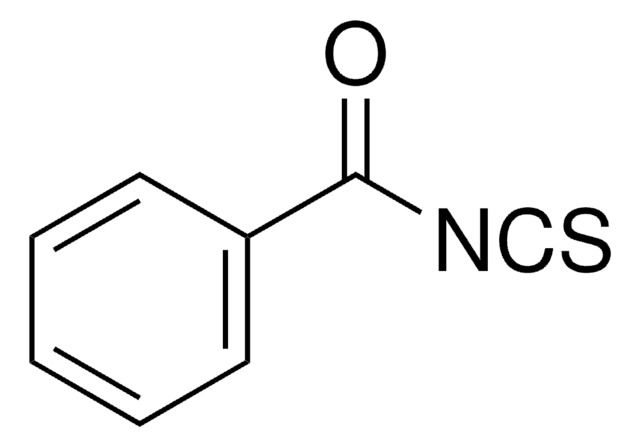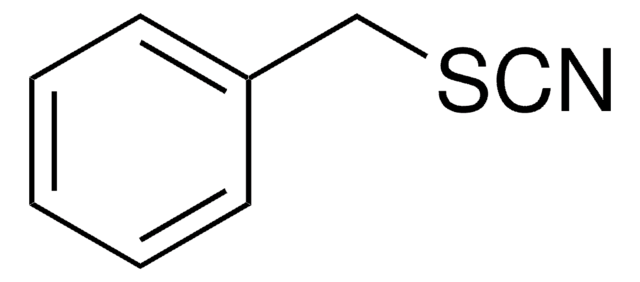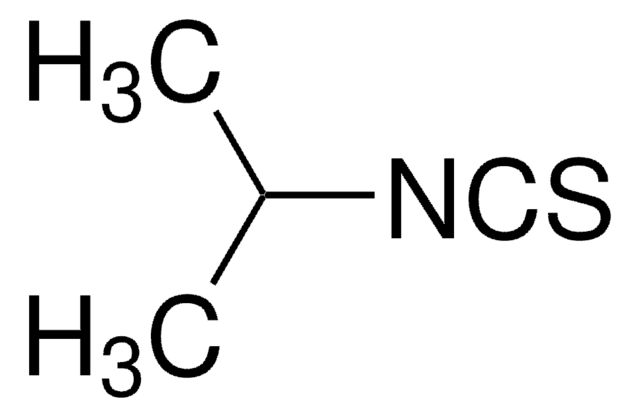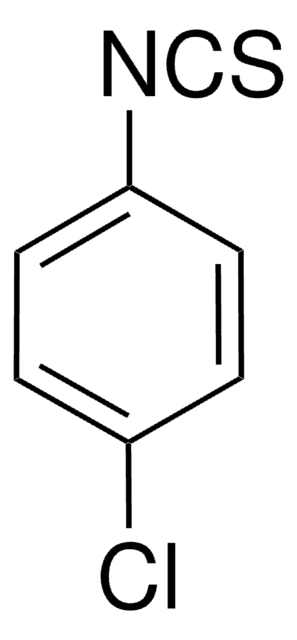252492
Benzyl isothiocyanate
98%
Synonym(s):
Benzyl mustard oil, Isothiocyanotaomethylbenzene
About This Item
Recommended Products
Assay
98%
form
liquid
refractive index
n20/D 1.601 (lit.)
bp
242-243 °C (lit.)
density
1.125 g/mL at 25 °C (lit.)
storage temp.
2-8°C
SMILES string
S=C=NCc1ccccc1
InChI
1S/C8H7NS/c10-7-9-6-8-4-2-1-3-5-8/h1-5H,6H2
InChI key
MDKCFLQDBWCQCV-UHFFFAOYSA-N
Looking for similar products? Visit Product Comparison Guide
Related Categories
General description
Application
- N
- -benzylthioureas by reacting with various amines.
- N-benzyl-O-alkyl carbamates by treating with long-chain alcohols.
- 3-mercapto-1,2,4-triazole building block by reacting with formylhydrazine via acyl thiosemicarbazide intermediate formation.
- S-(N-benzylthiocarbamoyl)-L-glutathione and S-(N-benzylthiocarbamoyl)-L-cysteine.
Signal Word
Danger
Hazard Statements
Precautionary Statements
Hazard Classifications
Acute Tox. 4 Oral - Eye Irrit. 2 - Resp. Sens. 1 - Skin Irrit. 2 - Skin Sens. 1 - STOT SE 3
Target Organs
Respiratory system
Storage Class Code
10 - Combustible liquids
WGK
WGK 3
Flash Point(F)
222.8 °F
Flash Point(C)
106 °C
Personal Protective Equipment
Certificates of Analysis (COA)
Search for Certificates of Analysis (COA) by entering the products Lot/Batch Number. Lot and Batch Numbers can be found on a product’s label following the words ‘Lot’ or ‘Batch’.
Already Own This Product?
Find documentation for the products that you have recently purchased in the Document Library.
Customers Also Viewed
Our team of scientists has experience in all areas of research including Life Science, Material Science, Chemical Synthesis, Chromatography, Analytical and many others.
Contact Technical Service











